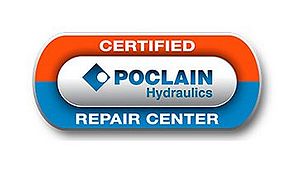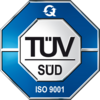Packing instructions for technical components
1. Intended purpose
These packaging instructions regulate the packaging requirements for delivered materials. They are intended to improve quality, create uniform regulations (in a concise format) and pre-empt queries.
2. Shock-sensitive parts
Shock-sensitive parts, especially parts with sealing surfaces and control edges, must be protected against damage by means of appropriate packaging or special load carriers, both for transport and for normal long-term storage.
3. Packaging materials
The packaging must be carefully selected so that there is no risk of hazardous substances contaminating the components that are to be protected.
4. Cleaning, corrosion protection, packaging, labelling and quality assurance
4.1. Scope of application
The regulations listed under point 4 apply to deliveries of components with a bright metallic surface, i.e. parts without any surface protection.
4.2. Cleaning
All parts must be cleaned prior to corrosion protection. Once cleaned, the parts must be dried. Suitable cleaning fluids and technical equipment must be used to achieve the required level of cleanliness on the surfaces/the part as a whole. Castings that need to be shipped as semi-finished products for further processing must be delivered free of foundry residues.
4.3. Corrosion protection
Before corrosion protection begins, all bright metallic surfaces – whether internal or external – must be free of any initial corrosion. Unprotected surfaces may only be touched with clean gloves (chloride free). Surfaces that have been pre-treated with a corrosion protection liquid must not be touched with bare hands either. Unprocessed forgings and castings made of ferritic materials must be rinsed or sprayed with the following products after the cleaning and drying process: AVILUB VCI 1411; AVILUB VCI 1405
Depending on the component, dry corrosion protection by means of VCI dispensers can also be carried out in individual cases, subject to advice from the supplier and approval from SAB. The openings should then be sealed immediately using suitable caps or covers (where available and technically feasible). After the drying process, the parts to be protected must be packed using the film listed below under “Packing”. If you have any questions about VCI products, please address them directly to:
Hermann Bantleon GmbH
Mr Jung
89003 Ulm / Donau
Germany
Tel. +49 (0)731 / 3990 – 32
The relevant components must be placed inside a protective mesh tube to protect them against mechanical damage and prevent contact corrosion. For castings, a sealed VCI bag in a lattice box is sufficient for corrosion protection.
4.4. Packing
The bag sizes or other secondary packaging should be carefully selected so that the VCI film can be laid loosely around – but still close to – the component. This helps to create a VCI atmosphere inside the packaging and means that penetrating moisture can be inhibited more effectively. The film should never be pulled tightly over the parts and shrink wrapping is not advisable either. If this is desired in individual cases, it is recommended that you insert VCI bubble wrap (for example) as padding. Components that are painted on the outside or protected against corrosion with other coatings can also be packed conventionally.
4.5. Load carriers
Only our small load carriers are to be used for mechanically processed production parts. These must be requested from the e-mail address (einkauf@sauerbibus.de) at least 6 weeks before delivery, stating the article number and quantity.
4.6. Labelling
The packaging must be labelled with the “VCI” notice, product designation and corrosion protection date. In the case of VCI packaging systems, the packaging date is the same as the indicated corrosion protection date, and vice versa.
5. Further packing instructions
5.1. Elastomers and plastics
Packaging: All elastomers/plastics are to be delivered individually packaged and hermetically sealed in UV-impermeable bags. O-rings with a diameter of up to approx. 300 mm must not be twisted.
Labelling: Please note that a label must be attached that clearly shows the date of manufacture, designation, dimensions, material specification, commission number and – where applicable – the certificate number. In addition, the manufacturer and our material number must be indicated.
5.2 Roller bearings
All roller bearings must be delivered individually packed (original packaging and protected against corrosion by the manufacturer).
In general, the selection of suitable packaging is the responsibility of the supplier. When selecting the packaging, the supplier must generally assume that the goods are to be delivered via combined road/rail/air transport with multiple handling operations.
6. Special notes
6.1. Other corrision protection and packaging methods
The described corrosion protection and packaging methods must be observed as a basic principle. Should the contractor wish to use other corrosion protection and packaging methods, these must be agreed with the client in advance. However, the foils used must always be free of heavy metals, nitrites and chlorides. Should the contractor disregard these instructions, the client will charge the contractor for costs incurred, e.g. for disposal and the removal of the corrosion protection.
Stand: 12.05.2022
SAUER BIBUS GmbH
Lise-Meitner-Ring 13
89231 NEU-ULM
DEUTSCHLAND
Tel. +49 731 1896-0
Fax +49 731 1896-199








